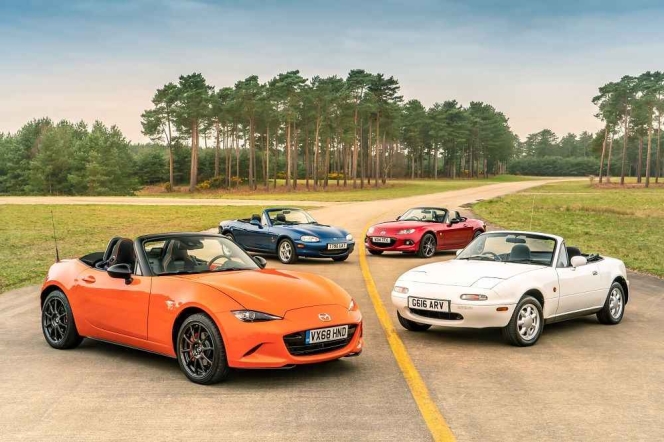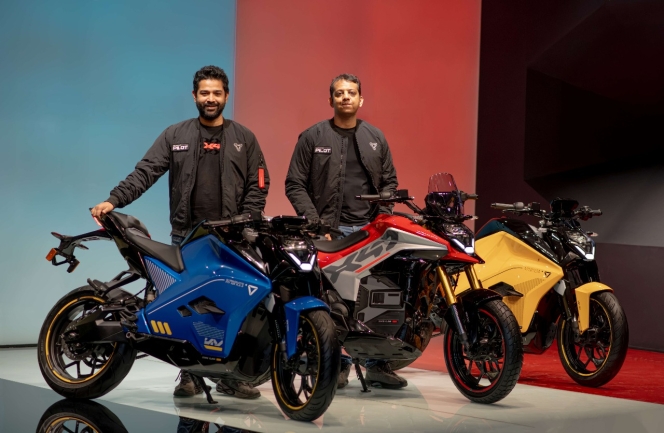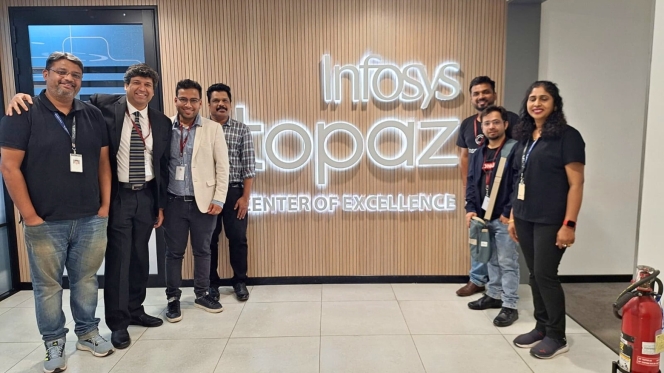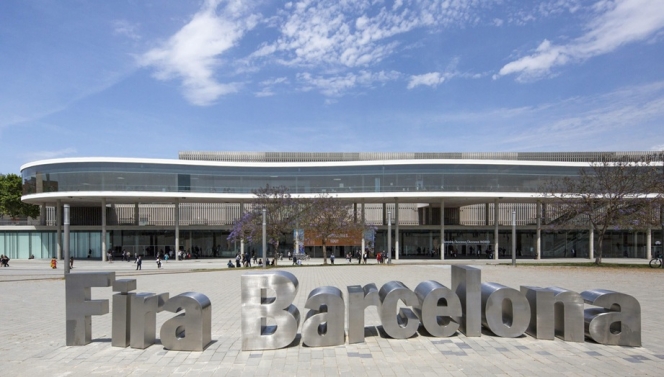- Tata Motors
- Tata Motors Commercial Vehicles
- Tata Motors Passenger Vehiccles
- TML
- TMPV
- TMLCV
- Companies Act
- 2013
Mazda Evolves With Time
- By 0
- June 15, 2020


The Toyo Kogyo Company continued to manufacture machine tools alongside the three-wheel trucks, expanding its car production capability in 1960 to produce the Mazda R360 Coupe - Mazda’s first passenger car.
It was from this point that the Toyo Kogo Company really started to make an impression on the automotive world with four new vehicles produced in just four years and cumulative vehicle production reaching a million by 1963. By 1970 the company was producing twelve vehicles and with the accumulative production figure approaching five million it had already developed engine technology that no other manufacturer had been able to perfect - the rotary engine.
At the heart of every car is the engine, and in their quest to develop the perfect combustion method, Mazda has developed some of the industry’s most interesting power units over the years. In the 1960’s Mazda saw the potential of the rotary engine, the ability to develop high power from a lightweight, small capacity engine with a smooth operation due to rotating parts rather than reciprocating movement. The unique characteristics of the rotary all contributed to the driving experience that has made Mazda rotary engine cars a favourite of drivers the world over and brought motorsport success to Mazda over the last fifty years.
Mazda has never been one to follow the herd and in 1995 it was the first automotive manufacturer to develop and use a Miller Cycle engine, initially in the Mazda Xedos9 and more recently the Mazda2 in Japan. Previously limited to large capacity engines, the Miller cycle engine was used in ships and trains, it improves efficiency through reduced pumping losses and is used to control NOx at high engine load by reducing the temperature at full compression.
With the launch of the CX-5 in 2012, Mazda introduced the Skyactiv G and Skyactiv D engines, developed in pursuit of the perfect engine to improve efficiency and emissions. The major breakthrough was a common compression ratio of 14:1 for both fuel types, the world’s highest compression ratio of any petrol engine, and for diesel, the world’s lowest compression ratio. The new petrol engine improved fuel efficiency and torque by 15 percent, while the diesel improved both by 20 percent, offering better real-world driving emissions and efficiency.
The production process also benefited from the low compression ratio of the diesel engine. With a compression ratio of 14:1 the diesel engine can be constructed entirely from aluminium, this led to a standardisation of diesel and petrol engine manufacturing, allowing them to be made on the same line with the same machining processes, this was an industry first.
Pushing the boundaries of what is possible in the development of the internal combustion engine Mazda launched the world’s first compression ignition petrol engine in the Mazda3 in 2019. Controlled by a spark plug, the SPCCI engine is the second step in Mazda’s quest to develop and petrol engine with the ideal combustion method. Developing compression ignition for petrol engines had long been a goal of engineers, some believing it was an impossible goal. In the SKYACTIV-X, a spark plug is used to control compression ignition, resulting in dramatic improvements across a range of important performance indicators.
Plastic manufacturing and recycling has been a concern for Mazda for over three decades with a focus on research and development. In 1992 Mazda was the first manufacturer to recycle bumpers, initially just using the recycled plastic for hidden parts such as undertrays. By 2011 Mazda had developed a world-first recycling technology, which enhanced the process it uses to recycle used bumpers from vehicles whose useful life has ended into raw plastic resin for use in new vehicle bumpers. The recycled materials first started being used in the rear bumper of the Mazda Biante minivan.
Under the ‘Mazda Biotech material’ name, the company has succeeded in developing the automotive industry's first high-strength heat-resistant plant-derived bioplastic for interior parts, and, in 2007, the world's first biofabric for vehicle seat upholstery made entirely from plant-derived fibre. In 2015 Mazda developed the world’s first bio-plastic that was of a high enough quality to be used in design decoration parts on the Mazda MX-5 and then on CX-5, CX-30 and MX-30.
Turning their attention to the painting process, Mazda achieved world-class low CO2 emission levels with the implementation of the Three Layer Wet Paint System in 2002. Then in 2009 Mazda developed the Aqua-tech paint system to create one of the most environmentally-friendly automotive paint systems in the world. It reduces emissions of volatile organic compounds (VOC) by 78 percent compared to Mazda's previous oil-based paint systems without increasing energy consumption (and associated CO2 emissions) which was already one of the lowest of any paint system in the world.
As the world turned its focus onto car emissions in the 1990s, Mazda unveiled the HRX-1 hydrogen powered concept car at Tokyo motor show in 1991. Hydrogen as the motive power for a car has the environmental benefit of the exhaust emissions being water, but to develop a standard reciprocating engine to run on hydrogen requires expensive modification. With a long heritage in developing the rotary engine, Mazda engineers recognised the potential to run the rotary on hydrogen because of the unique way the engine combusts, meaning the expensive modifications required to convert a reciprocating engine to hydrogen did not apply to a rotary.
In 2006 Mazda became the world’s first company to commercially lease hydrogen powered rotary engine cars with the hydrogen Mazda RX-8 RE. In 2007 Mazda developed the world’s first catalyst material using single nanotechnology with two main features to inhibit the thermal deterioration caused by the agglomeration of precious metal particles and offer a significant improvement in oxygen absorption and release rates for enhanced emissions clearing purification.
As Mazda continues in its quest to create the world’s most efficient internal combustion engine and the most environmentally friendly production techniques and materials the company hopes to create world firsts that benefit both the customer and environment.
Magic Behind MX Moniker
While celebrating centenary year Mazda is also looking to the future with the debut of its first all-electric production vehicle – the Mazda MX-30, a unique, stylish and versatile crossover EV.
With its distinctive styling and freestyle doors combined with a cabin where the use of environmentally-friendly materials has been carefully matched to meticulous quality and finish, the MX-30 is a stand-out addition to the Mazda line-up. However, why does it wear the MX moniker? A badge made most famous by the MX-5.
The MX prefix is given to a car that takes on a challenge to create and deliver new values without being confined by convention regardless of vehicle type. When it was revealed in 1989 the Mazda MX-5 was exactly this kind of car, as the automotive industry as a whole moved away from the affordable sports car, Mazda defied convention to create a perfect modern reinterpretation of the classic rear-wheel drive roadster.
More than three decades later the MX-5 needs no introduction, but the first car to wear the MX badge is less famous, however there’s no forgetting it once you’ve seen it. Revealed in 1981, the Mazda MX-81 Aria concept car was created by Italian styling house Bertone, who using Mazda 323 running gear created a futuristic wedge-shaped hatchback. A one-off concept that certainly met the defy convention ethos of MX models, it led to a future relationship with Bertone, while things like the high-mounted taillights and pop-up headlamps appeared in future Mazda production cars later in the eighties.
Next in the MX lineage was the 1983 MX-02 concept car, a big flat sided five-door hatch with large windows, aerodynamic rear wheel covers and flared in door mirrors. Unique features included rear wheel steering and a windscreen head-up display. The one-off theme continued with the 1985 Mazda MX-03, which again was a radical looking concept car, but this time it was a defy convention sports car that was powered by a triple rotor 315ps engine. Conceived purely as a concept, this low-slung coupe, was pure futuristic exuberance, with a cabin that featured an aircraft style yoke rather than a wheel, plus digital displays and a head-up display, its technology tally also including four-wheel steering and all-wheel drive, while the long low body delivered an aerodynamic Cd figure of just 0.25.
While the MX-02 and MX-03 shared some of the same futuristic design cues, the MX-04 was completely different. Displayed at the 1987 Tokyo Motor Show, the MX-04 was a front-engine rear-wheel drive sports car chassis that had removable fibreglass panels, but not just one, but two different sets, allowing the car to switch from a glass dome roofed coupe to a beach buggy style open sided roadster. Powered by a rotary engine this barmy shape-shifting sports car was never a serious contender for production, but little did outsiders know that Mazda was already developing the MX-5, and just two-years later, the most famous car to wear a MX badge arrived.

And the next cars to wear the MX badge were also production models, both cars built on the MX-5’s success and offered very different coupe styles. Sold from 1992 to 1993, the Mazda MX-3 was a four-seat coupe hatchback that disregarded the convention for normal hatchbacks to offer buyers something far more stylish and sportier, while it further earnt its MX badge by being available with the world’s smallest mass-produced V6 engine. The larger MX-6 coupe conveyed big premium coupe style for family saloon money, but in the 1990s arguably the most radical car to wear the MX badge was the Mazda MXR-01.
Into the 21st century the MX moniker returned to adorn concept cars, all of which stayed true to the MX ethos of delivering something new by challenging convention: the 2001 MX-Sport Tourer concept was a radical MPV concept with freestyle doors and sweeping body design, that highlighted the fact an MPVs did not have to be boxy or dull, something the resulting Mazda5 proved. In fact, the 2004 Mazda MX-Flexa was a concept that was even closer to the final ground-breaking Mazda5 production car, sharing its popular sliding rear doors.
The 2002 MX-Sport Runabout concept previewed the modern look of the second-generation Mazda2, while the 2003 MX-Sportif was the concept that previewed the first generation Mazda3, which was a big step forward from the outgoing Mazda 323.
And now with the arrival of the ground-breaking MX-30, it’s appropriate that the MX name returns to a production model – as Mazda’s first production EV, the MX-30 is a car that represents a new chapter in Mazda’s history. (MT)
Neusoft And MapmyIndia Partner For Intelligent Mobility Solutions
- By MT Bureau
- December 06, 2025

Chinese technology company Neusoft Corporation and Mappls MapmyIndia have signed a Memorandum of Understanding (MoU) to leverage their strengths in software and data resources to collaborate deeply.
The companies will engage in joint technological development, ecosystem collaboration and resource integration to provide navigation products and intelligent mobility solutions tailored to localised needs in emerging markets such as Southeast Asia and India.
The partnership is a response to the fact that while global auto brands are expanding into Southeast Asia and India, they face challenges in these regions due to complex road conditions, unique traffic rules, extensive addressing systems and high localisation adaptation costs. These issues limit the ability of automakers to deliver a complete intelligent user experience.
Under the collaboration, Neusoft will adopt its OneCoreGo Global Intelligent Mobility Solution 6.0 Plus as the core technology carrier, deeply integrating MapmyIndia's map data, real-time traffic information and multi-dimensional value-added services. MapmyIndia is noted as the largest local mapping company in India, holding more than 90 percent market share in in-vehicle navigation.
The integration is intended to strengthen a full capability loop of ‘navigation + payment + interaction + connectivity + operations’.
Through API integration and technological convergence, the two parties will jointly develop navigation products and mobility solutions highly adapted to Southeast Asia, India and similar regional markets. These solutions will deliver precise route planning and real-time traffic guidance, address local user needs and continuously enhance product experience and scenario-based services. This will help automotive partners rapidly launch intelligent vehicle models with competitiveness in local markets.
The partnership enables Neusoft to combine the global end-to-end strengths of its solution with localised ecosystem resources, paving the ‘last mile’ for automakers entering the Southeast Asian and Indian markets and delivering comprehensive intelligent mobility experiences.
- Ultraviolette Automotive
- Zoho Corporation
- Lingotto
- F77
- X-47
- Shockwave
- Tesseract
- Narayan Subramaniam
- Niraj Rajmohan
Ultraviolette Secures $45 Million Growth Capital From Zoho And Lingotto
- By MT Bureau
- December 04, 2025

Bengaluru-based electric vehicle maker Ultraviolette Automotive has secured USD 45 million from Zoho Corporation and Lingotto, one of Europe's investment management companies as part of its ongoing Series E investment round.
The investment from Zoho Corporation was led by Sridhar Vembu, Mani Vembu and Kumar Vembu.
This growth capital will accelerate the domestic and international scale-up of current products F77 and X-47, as well as future product platforms Shockwave and Tesseract.
Ultraviolette has built a design and technology-led enterprise with the F77 and the recently launched X-47.
The company has expanded to 30 cities across India in a short span of 12 months and is expanding to 100 cities by mid-2026. The F77 motorcycles were recently launched in the United Kingdom, bringing Ultraviolette's presence to 12 countries across Europe.
Narayan Subramaniam, Co-Founder & CEO, Ultraviolette Automotive, said, “We are glad to announce our Series E investment from Zoho and Lingotto. Lingotto's legacy of backing iconic performance and mobility brands, combined with Zoho's long-term commitment to fostering cutting-edge Indian innovation, aligns perfectly with Ultraviolette's mission to build category-defining electric mobility solutions for India and global markets.”
Niraj Rajmohan, CTO & Co-Founder, Ultraviolette, said, "With the ongoing Series E investments, we are doubling down on growth and expanding our production to meet increasing demand. Our focus is on advancing breakthrough battery technology, elevating performance capabilities and expanding production to support upcoming product platforms. This investment will accelerate our journey towards scaling into India and global markets."
Disseqt AI Partners Tata Technologies And Infosys For Agentic AI Adoption
- By MT Bureau
- December 04, 2025

Agentic AI platform Disseqt AI has announced a partnership with Tata Technologies and Infosys. As per the agreement, Disseqt AI will assist both companies' IT and DevOps teams in developing and fast-tracking the production of tailored Agentic AI applications for automobile and FinTech companies globally.
The partnership aims to help auto and FinTech firms embrace customised Agentic AI faster and in a secure manner.
Disseqt AI, which has operations in Bengaluru, San Francisco and Dublin, provides an enterprise-grade platform for IT and DevOps teams. The company claims its platform cuts down Agentic AI testing and operations cost by 70 percent and improves productivity by up to 80 percent. The platform allows these teams to test, simulate and monitor their Agentic AI systems tailored across industries, ultimately enabling enterprises to operationalise tailored Agentic AI faster and at scale, without sacrificing ethics, governance and compliance.
Apoorva Kumar, Founder and CEO, Disseqt AI, said, “This is a landmark announcement for us as we further embed Disseqt into enterprise workflows for testing, simulation, monitoring and auditability purposes. We are already working closely with both Tata and Infosys on several projects and are proud to be part of their innovation initiatives”
Last month, Disseqt AI announced a strategic collaboration with HCLTech and Microsoft to guide financial services institutions with Agentic AI adoption.
Battery Passport Implementation Beyond EVs To Be Focus Of Barcelona Event
- By MT Bureau
- December 03, 2025

Battery and Energy Storage Europe has announced a programme focused on the EU Battery Passport, a regulatory milestone that becomes mandatory in February 2027. The Barcelona-based event will address the compliance gap for applications beyond the electric vehicle (EV) sector, which have dominated the conversation to date.
The event, taking place on 8th and 9th September 2026 at Fira de Barcelona's Gran Via venue, will focus on solutions and talks for applications that fall within the regulation's scope: stationary energy storage, industrial batteries, grid-scale systems, long-duration energy storage and emerging applications in aerospace, maritime and rail electrification.
With the February 2027 legal requirement date approaching, the programme will bring together industry leaders, technology providers, and policy experts to address the compliance challenges facing these diverse sectors.
The Battery Passport is a digital record documenting a battery's entire lifecycle, from raw material sourcing to production, performance and eventual recycling. From February 2027, it becomes mandatory for all rechargeable EV, industrial and LMT batteries over 2 kWh sold in the EU.
Linked via QR code, the passport will track each battery's complete lifecycle, including composition, carbon footprint and recycled content, fundamentally transforming supply chain transparency and sustainability practices across Europe.
The programme will explore implementation topics including digital infrastructure requirements, data management systems, supply chain integration, verification processes and recycling traceability.
Ken Davies, Conference Programme Director at Battery and Energy Storage Europe, said, "The Battery Passport represents one of the most significant regulatory shifts our industry has faced, yet many companies are still grappling with what implementation actually means for their operations. While the EV sector has dominated the conversation, there's a critical need to address how this regulation applies to stationary storage, industrial applications and the innovative battery technologies powering Europe's energy transition. With the clock ticking toward February 2027, Battery and Energy Storage Europe will shine a light on the practical implementation requirements for these often-overlooked sectors, connecting stakeholders with actionable solutions and bringing together the expertise, technology providers, and collaborative spirit needed to turn compliance into competitive advantage across the full spectrum of battery applications."





Comments (0)
ADD COMMENT